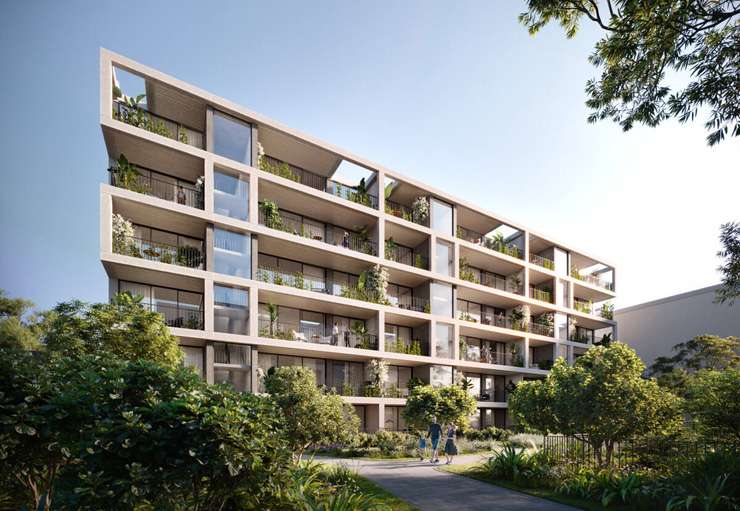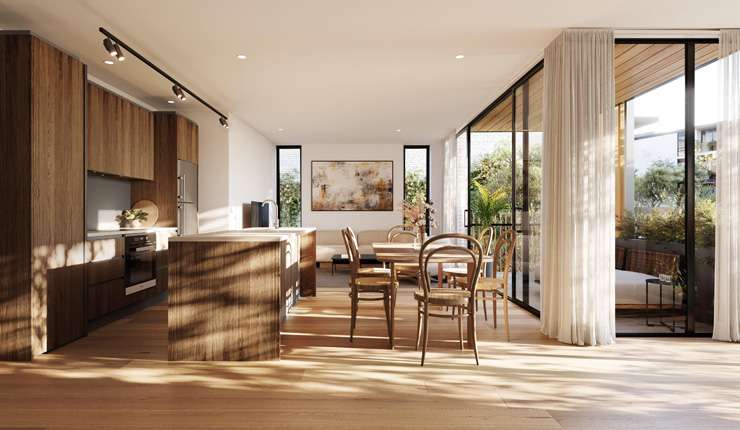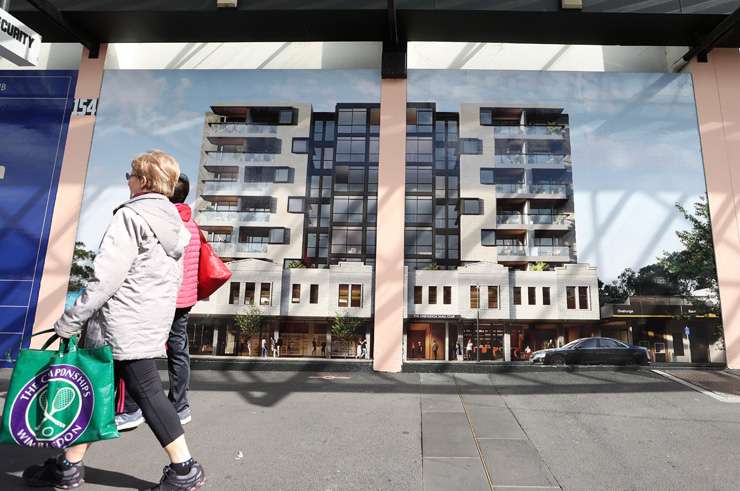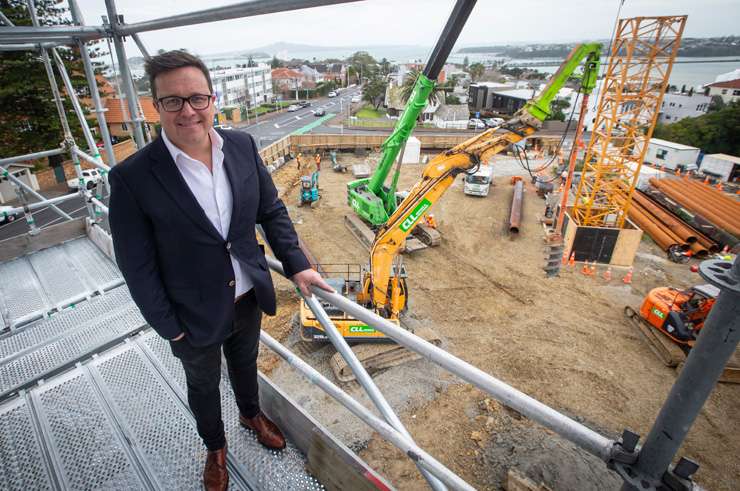The supply of new apartments is likely to dry up over the next few years as financing woes and a tepid housing market take their toll on developers.
Apartment specialists told OneRoof that the new-build sector was feeling the squeeze as a result of the market downturn, and warned buyers that new stock could be become scarce as developers put projects on hold.
Suzie Wigglesworth, national projects director at Bayleys, said the new development market for anything other than high-end apartments was tough right now. “Where the developers are struggling a little bit is at the medium to lower end [of the market]. A lot of those projects have been placed on hold, pending the market improving,” she said.
A number of apartment developments are still proceeding, though, including TLC Modular’s Elevation project in Auckland’s Northcote, which Bayleys is bringing to market.
Start your property search
Read more:
- The big split between NZ and Australian house prices
- Remuera ‘boathouse’ sells for $12.8m - $3m above CV
- Bags of style: Deadly Ponies duo turn tired villa into luxury model
The development consists of ready-made pods, which are shipped to New Zealand from their manufacturer in Vietnam and then craned into place. Wigglesworth said the project was close to completion and she noted that sales and visits to the show home in the last six weeks had picked up.
“It’s getting closer to completion. Buyers have been on the journey with us for a very long time. Lots of them have been to see us numerous times, and are now in a position to actually purchase. So, it’s starting to get some real traction.”
One of the factors holding back new developments has been the rapid escalation in construction costs coming at the same time as falling house prices, meaning costs can’t be passed on. However, Wigglesworth said, construction costs have started to plateau.
“Concrete is still fairly up there. But for timber, for example, costs have started to decline. So, it depends on what it is that you’re constructing it out of,” she said.
Colliers national director Pete Evans said the stalling of new projects meant there could be a lag of up to three years for new stock to become available.
Colliers is marketing in Auckland the Domain Collection, a prestige development on Carlton Gore Road, in Newmarket, which is about 70% sold; Elementum, a mid-market project in Long Bay; and the Onehunga Mall Club, in Onehunga. Beyond that, new apartment projects have all but dried up, Evans said.
“The hardest thing for developers is the traditional finance model. They might buy a site, do their feasibility, take it to market [and] try to get 60% of it sold. Then they’ll go to a bank with a whole heap of contracts. The bank will fund the construction and it gets built.”

The Domain Collection, on Carlton Gore Road, in Newmarket, Auckland, comprises 69 residences within two buildings, the Park Residences and Garden Residences. Photo / Supplied

An artist's impression of the interior of the Elementum apartments, in Long Bay, Auckland. Photo / Supplied
Currently, however, most developers can’t get beyond feasibility, let alone get the sales. “So, we’re just seeing supply just drying up. New supply is almost non-existent.”
Evans said the current lack of activity in the apartment development market was likely to delay construction of the next wave of apartments by about three years. “It’s only a couple of developers who don’t need all those things in place who say, ‘OK, now’s the best time to go and actually buy land at the right price’,” he said.
Evans said that buying was best when the market was flat, as it was now. “At the moment [the market] certainly is very close to the bottom, if not at the bottom.”
Developer Martin Cooper, of Cooper & Associates, said materials inflation had been an issue for his build of One Saint Stephens apartments in Parnell. New buildings after this one would cost more, he said.
Like other apartment specialists, Cooper has seen interest in sales start to pick up again over the past six weeks. He said 22 of the 27 apartments at One Saint Stephens were sold. “There is quite a bit of life in the market now that construction is underway.”
He felt that potential apartment buyers would be taking notice of last month’s announcement by the Reserve Bank of New Zealand that the Official Cash Rate had hit its peak, at 5.5%. “They’ll be thinking, ‘If the market is going to be the same for the next couple of years, then do I want to wait two to four years to then make a decision? Or am I just going to get on with it now?’ I think there’s an element of that coming into play in the market,” he said.

The Onehunga Mall Club is a new apartment development under construction in Auckland's Onehunga. Photo / Fiona Goodall

Developer Martin Cooper on the scaffolding overlooking the build of a new apartment development at One Saint Stephens Avenue, in Auckland's Parnell. Photo / Jason Oxenham
Cooper said that new supply would also tighten. “That’s across the board from both affordable and luxury. If you’re not buying something now that’s already underway, you could be waiting two to four years because it’s going to take that long for the capacity to come through.”
CBRE’s associate director research Tamba Carleton said the number of build-to-rent projects for social housing and developer-held investment was equal to the number of apartment buildings destined for the open market.
“This data is indicative of one way in which developers might be able to move forward and finance their builds, a way to stay active,” she said.
The construction cycle has hit the bottom but build-to-rent apartment developments don’t require pre-sales. “In the first three months of 2023, we saw 61 projects across for-sale and non-saleable sectors, which compares with the last quarter of 2022, which showed 73 saleable versus 58 non-saleable [projects],” Carleton said.
“It is interesting to see the non-saleable sector growing by a net of three in the last quarter, which in our view is indicative of people starting to see the pathway ahead of them, particularly as the number of Kāinga Ora projects hold steady [33 in Q4 2022, and 35 in Q1 2023].”
The last time there were 61 saleable projects in the pipeline was in Q4 2014, said Carleton. At that point in time there were only four non-saleable projects.
- Click here to find more properties for sale in Auckland








































































